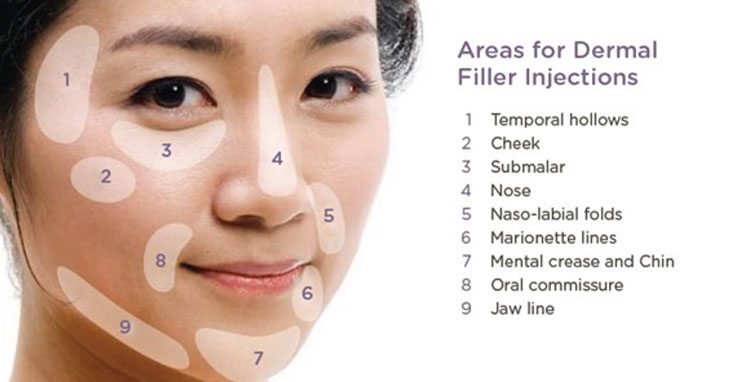Dermal fillers (Hyaluronic acid fillers)

Dermal fillers are gel-like substances injected under the skin. Dermal fillers are meant to create a smoother or fuller appearance, or both.
The effects of most FDA-approved dermal fillers are temporary because they are made from materials that the body eventually breaks down and absorbs. The injection procedure may have to be repeated to maintain the desired effect.
Types of dermal fillers
Temporary fillers include the following materials:
- Hyaluronic acid, a sugar that is naturally found in the body
- Calcium hydroxylapatite, a mineral and a major component of bone
- Poly-L-lactic acid (PLLA), a biodegradable, synthetic material
FDA-approved uses of dermal fillers
Dermal fillers are approved for specific uses in people aged 22 and older. Those uses include:
- Correcting moderate-to-severe facial wrinkles and skin folds
- Increasing fullness of lips, cheeks, chin, under-eye hollows, jawline, and back of the hand
- Restoring facial fat loss in people with human immunodeficiency virus (HIV)
- Correcting acne scars on the cheek
Risks of FDA-approved fillers
As with any medical procedure, there are risks involved with the use of dermal fillers. Most side effects reported in clinical trials and post-market surveillance occur shortly after injection and go away within a few weeks. In some cases, side effects may emerge weeks, months, or years later.
Common risks include:
- Bruising
- Redness
- Swelling
- Pain
- Tenderness
- Itching
- Rash
- Difficulty in performing activities (only observed when injected into the back of the hand)
People should be tested for allergies before receiving dermal fillers made with certain materials, especially materials derived from animals, such as collagen.



